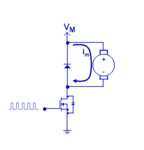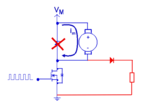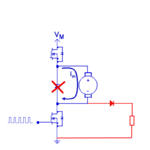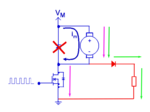righteous
Full Member level 2
Gents,
I was reading this rather informative blog from Texas Instruments called So, Which PWM Technique is Best? but it didn't quite answer my question.

My assumtion is that the BEMF is looping around the diode and the motor, if I'm right in my assumption, then how to prevent the BEMF from circulating and thereby aiding coasting? Is it possible to persuade the BEMF to pick another route? I mean other than going full H-bridge and Quadrant-4?
Wouldn't this be possible? The BEMF is dissipated in the resistor?

Regards
I was reading this rather informative blog from Texas Instruments called So, Which PWM Technique is Best? but it didn't quite answer my question.

My assumtion is that the BEMF is looping around the diode and the motor, if I'm right in my assumption, then how to prevent the BEMF from circulating and thereby aiding coasting? Is it possible to persuade the BEMF to pick another route? I mean other than going full H-bridge and Quadrant-4?
Wouldn't this be possible? The BEMF is dissipated in the resistor?

Regards
Last edited:




